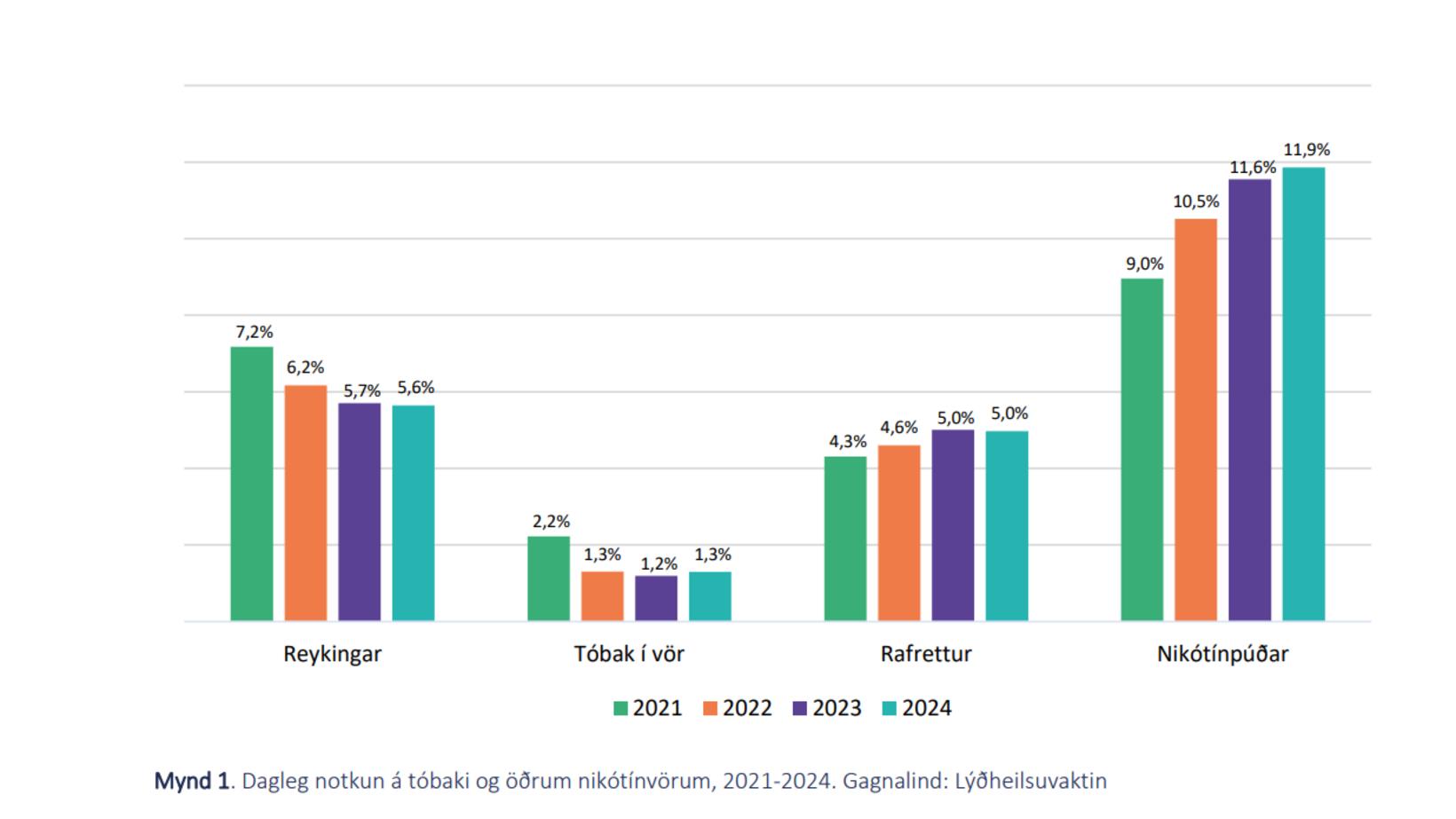Nicotine pads become the most common consumption form of nicotine

Nicotine pads have taken out of electrical, cigarettes and oral tobacco and now at the top as the most common consumption form of nicotine. More consume nicotine pads daily than electricity and cigarette together. This is stated in the nuclear of the Medical Director of Health.
There has been a significant increase in the use of nicotine pads in the three years taken, but the proportion of adults using nicotine pads daily has risen from 9% in 2021 to almost 12% in 2024.
Changed nicotine consumption patterns
Consumption of electricity has gradually increased since they came on the market in Iceland, but now about 5% of individuals over the age of 18 use electricity daily.
On the other hand, smoking has decreased somewhat, but the proportion of adults who smoke daily has fallen from 7.2% in 2021 to 5.6% 2024.
The incidence of smoking among young people is also much lower than that of young people in other Nordic countries and the Baltic States according to Nordic Welfare Center (NWC).
In a NWC report, however, Icelandic young people use nicotine products to a greater extent than young people in the aforementioned countries.
Sex and age-related consumption differences
In the numbers of the Medical Director of Health it is stated that women use electricity rather than men, but the daily use of men on nicotine pads is almost 10 percentage points higher than women (16.3% against 6.8%)
The age -old is also different in nicotine consumption, but younger people are more likely to use nicotine pads and electricals than older people who choose to smoke.
The levy has already reduced nicotine consumption
According to the report, one of the most effective ways to reduce the use of nicotine, and especially among young people, is to raise the levy on these products. A new fee on nicotine products that were imposed at the end of the year can
It also states that the first results of the monitoring of the Office of the Medical Director of Health indicate that the use of nicotine pads in the first quarter of 2025 has been reduced. Therefore, the legislative change may be expected to be effective.









